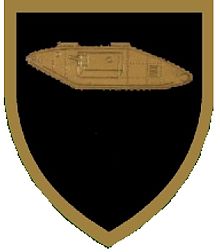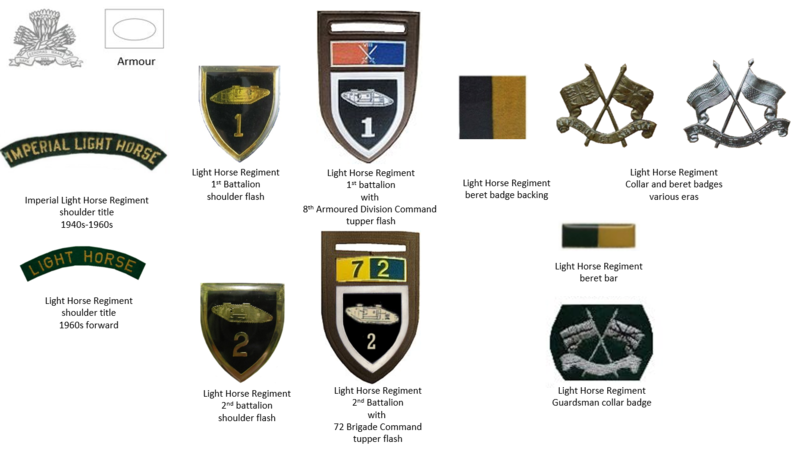
The Second Boer War, also known as the Boer War, the Anglo–Boer War, or the South African War, was a conflict fought between the British Empire and the two Boer Republics over the Empire's influence in Southern Africa from 1899 to 1902.

The Solomon Mahlangu Regiment is a reserve infantry regiment of the South African Army.

The Cape Town Highlanders is a reserve mechanised infantry regiment of the South African Army.

The Bambatha Rifles is a reserve mechanised infantry regiment of the South African Army.
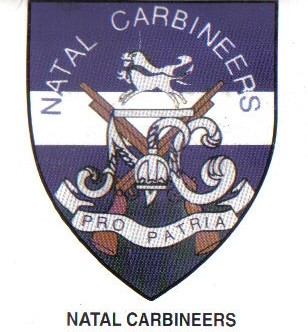
The Ingobamakhosi Carbineers is an infantry unit of the South African Army.

The 2nd/14th Light Horse Regiment is a regiment of the Australian Army and forms part of the Royal Australian Armoured Corps. The regiment is an Australian Light Horse unit, and has been widely romanticised and popularised in literature and poetry throughout the 20th century. The unit sentimentally traces its lineage to 1860 and is the oldest Australian Regular Army unit through antecedent units the 2nd Moreton Light Horse (QMI) and the 14th West Moreton Light Horse (QMI). The regiment is assigned to 7th Brigade based in Brisbane and is equipped with the M1A1 Abrams tank and the ASLAV reconnaissance vehicle.

Andrew Mlangeni Regiment is a reserve infantry regiment of the South African Army.

The Kimberley Regiment is an infantry regiment of the South African Army. As a reserve unit, it has a status roughly equivalent to that of a British Army Reserve or United States Army National Guard unit.
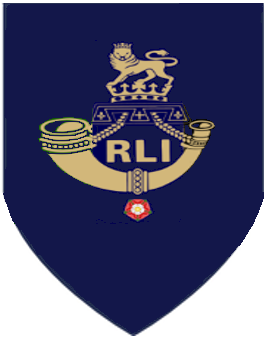
The Rand Light Infantry (RLI) is an infantry regiment of the South African Army. As a reserve unit, it has a status roughly equivalent to that of a British Army Reserve unit or United States Army National Guard unit.

The Queen Nandi Mounted Rifles is an reserve armoured regiment of the South African Army.

The Battle of Elandslaagte took place during the Second Boer War, and was one of the few clear-cut tactical victories won by the British during the conflict. However, the British force retreated afterwards, throwing away their advantage.

The 1st Royal New South Wales Lancers was an Australian Army light cavalry (reconnaissance) regiment. Its complicated lineage includes the New South Wales Lancers which was first formed as a colonial unit in 1885 as the New South Wales Cavalry, and subsequently saw action in the Second Boer War, and later during First World War at Gallipoli and Palestine as the 1st Light Horse Regiment. The unit subsequently served during the Second World War as the 1st Armoured Regiment equipped with Matilda tanks, fighting the Japanese in New Guinea and Borneo.

The Scottish Horse was a Yeomanry regiment of the British Army's Territorial Army raised in 1900 for service in the Second Boer War. It saw heavy fighting in both the First World War, as the 13th Battalion, Black Watch, and in the Second World War, as part of the Royal Artillery. It amalgamated with the Fife and Forfar Yeomanry to form the Fife and Forfar Yeomanry/Scottish Horse in 1956. The lineage is maintained by "C" Fife and Forfar Yeomanry/Scottish Horse Squadron of The Scottish and North Irish Yeomanry based in Cupar in Fife.
21st Brigade was an infantry formation of the British Army first organised in the Second Boer War, when it took part in Ian Hamilton's March from Bloemfontein to Pretoria. Reformed in World War I it served under the command of first 7th Division and then 30th Division, fighting in most of the major battles on the Western Front from the First Battle of Ypres to the Armistice. It was briefly re-raised in the Sudan early in World War II before being transferred to the Indian Army.
The Natal Field Force (NFF) was a multi-battalion field force originally formed by Major-General Sir George Pomeroy Colley in Natal for the First Boer War. It was later re-established for the Second Boer War (1899–1902) and commanded by Major-General Sir Redvers Buller VC GCB GCMG.
The South African Light Horse regiment of the British Army were raised in Cape Colony in 1899 and disbanded in 1907.
Major-General Sir Reginald Walter Ralph Barnes was a cavalry officer in the British Army. He served in several regiments, and commanded a battalion of the Imperial Yeomanry, the 10th Royal Hussars, the 111th Brigade, and three divisions.
This page details the South African Army order of battle in 1940, before and after the formation of expeditionary forces.
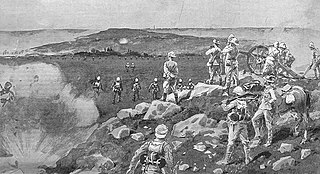
The Battle of Doornkop was a battle fought during Lord Roberts' advance on Johannesburg in May and June 1900.
